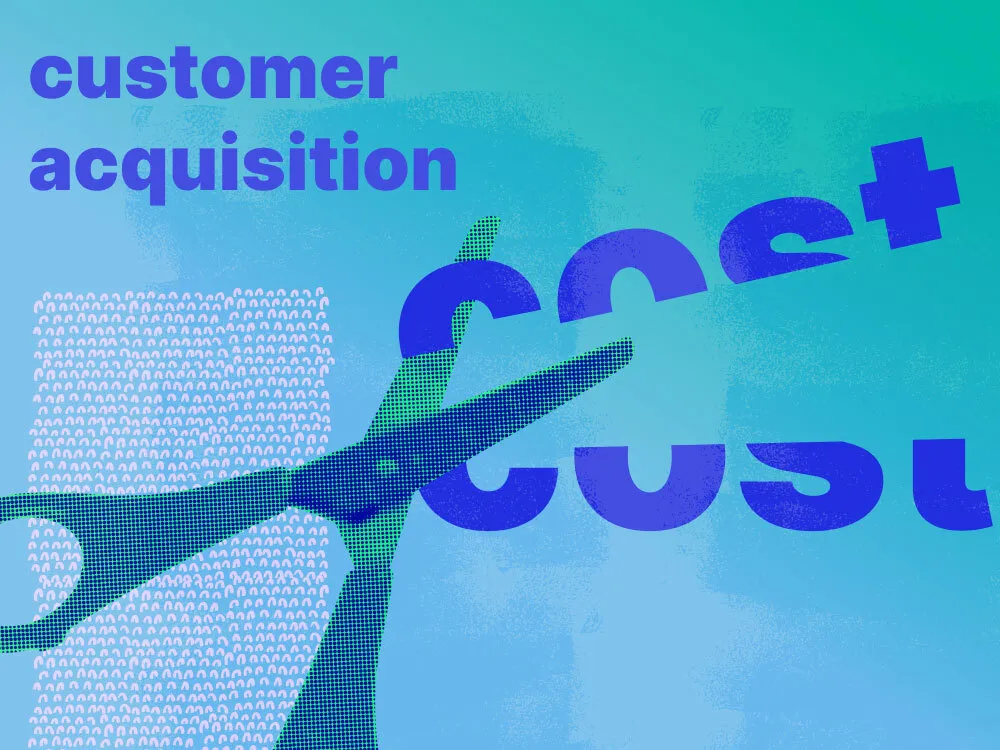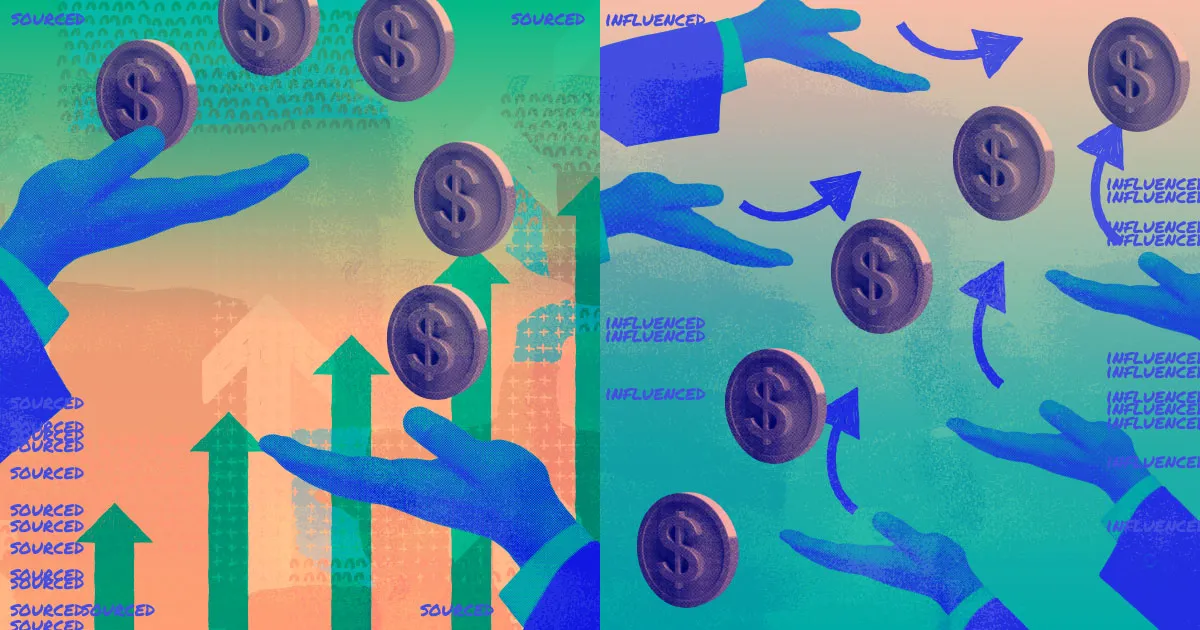Rewind your LinkedIn back a few years and you’ll see a very distinct pattern: VCs were obsessed with growth. If you were on track to reel in a million users, you were golden. If you weren’t, well, you could take a page out of an influencer’s growth hacks playbook.
But times have changed.
Now, those million users mean nothing if they’re not generating revenue. Investors are indexing on profitability more than they ever have before, which means companies need to get really serious about cutting expenses.
One of the biggest culprits? Customer acquisition cost (CAC). But if you don’t spend any money on customer acquisition, it’s nearly impossible to bring in new revenue.
The key is to find reliable channels. And partnerships are perhaps the most reliable of all because you set the incentives — effectively guaranteeing a certain cost per lead or opportunity.
In this article, we share:
- How partnerships accelerate customer acquisition
- How to design a partner program that wins more new business
- Expert input from PartnerStack co-founder Luke Swanek
Let’s get started.
How partnerships benefit customer acquisition
They bring cost efficiency
It costs a lot of money to get prospects’ attention. According to Userpilot, the average CAC in SaaS hovers around $700.
But partnerships slash that figure significantly. With partnerships, you don’t need to grab potential customers’ attention — partners already have it. They know exactly who in their network can benefit from your solution and have already built trust with leaders at that company.
And there are hard numbers to prove it.
“If you go look at earnings reports, you’ll see that enterprise SaaS companies regularly spend several dollars for every dollar of new customer revenue they generate,” Swanek points out.
“Our data shows that every $1 generated through PartnerStack costs a B2B company just $0.90. That’s four to five times more efficient than other leading SaaS companies' customer acquisition costs at $4 to $5.”
Those efficiencies matter — particularly if you’re thinking about expanding to new markets or industries where it’s even harder to rein in your CAC. Partners who already operate in that space can jumpstart your launch and introduce you to the right potential customers who are ready to buy.
Partners diversify your channels
In any business, putting all your eggs in one or two baskets is a huge gamble. Yet, that’s what many companies do with their customer acquisition strategy.
Case in point: building lead gen around SEO and SEM. Every time Google changes its algorithm, companies have to change their marketing approach along with it. With AI search, those changes have to happen on what seems like a daily basis.
A solid partnership strategy, on the other hand, de-risks your GTM — if one customer acquisition channel is down, you have more you can lean on to build pipeline.
“Having differentiated roads to market is crucial, especially in a rapidly volatile market, and every partner that you work with is a new customer acquisition channel,” Swanek explains. “The more highly valuable partners you have on your roster, the more defensible your strategy becomes.”
Working with all types of partners helps you cover more ground and get in front of potential customers you may never have caught the attention of otherwise.
As Swanek puts it, “You can have ten sales reps — or you can have one partner manager manage dozens of partners, all bringing you new customers in increasingly efficient ways.”
Related: Building a defensible B2B affiliate program that wins buy-in.

Partnerships provide extra resources
Not every company has the time, resources and expertise to support every single customer issue or use case. Partners can fill those gaps.
They have product features you don’t have. They have talented folks on their teams who can use that experience to improve the customer experience. And they may have partner marketing specialists who can help highlight those advantages in lead generation campaigns, getting more customers onboard who directly benefit from your joint solution.
The best solution partners will also improve your overall retention and customer lifetime value, avoiding churn while generating recurring revenue.
Per Swanek, “Partnerships not only bring new customers in, they can continue to add value at all stages of the customer lifecycle — from onboarding to success to delivery. Plus, the customers they work with tend to be stickier.”
At the same time, partners offset customer support and success costs, allowing you to funnel that money back into other revenue-generating streams.
How to use partnerships to scale customer acquisition
With all these benefits, it’s hard to make the case not to lean into partnerships as a means of lowering CAC. Here’s how to do it:
Hire well
The person leading your partner team can make or break your program. If you’re spinning one from scratch, Swanek recommends hiring internally.
“You want your program led by someone who’s already been at the business for multiple years, who’s familiar with selling the product and is entrepreneurial in nature.”
A proven sales leader is a natural fit — and you can position it as an opportunity for them to own the entire partnerships business unit. They can then tap other colleagues and peers they feel would be good fits for specific roles (ops vs. partner management) and specific partner types (SIs vs. affiliates).
You might also like: 10 partnership leaders you should be following on LinkedIn.
Prioritize partner engagement
Partners simply won’t bring new business if you don’t compensate them for it and not all partners will respond to the same incentives. Each partner sells and services the end customer differently.
So explore different partner engagement methods to see what works best. Swanek highlights a few examples:
- Sending closed lost opportunities to partners. Oftentimes, partners can re-engage the prospect and win them over.
- Attaching every new customer to a service partner. This ensures adoption, increases usage and, ultimately, increases total spend.
- See where the overlaps are. Referring them to customers you already have builds trust in the partnership and selling into their customer list and network can help your sales team prioritize other, harder-to-close deals.

Make co-marketing a key piece of GTM
Partners are trusted voices in their communities. Showing that you have their support can go a long way in attracting new potential customers.
Co-marketing organic content, guesting on each others’ podcasts and sharing the stage at events are all relatively inexpensive ways to use their platform to gain visibility (and vice versa if you have the more well-known brand).
But co-marketing with partners doesn’t have to be flashy. In fact, a more subtle approach can sometimes be even more beneficial.
Swanek emphasizes, “Publishers like Nerdwallet and Forbes Advisor have become very trusted sources — customers use them to make decisions that impact their lives and their work. Recommending products is so core to their business that co-marketing is almost invisible.”
Expand your partner roster
Any kind of partnership can get you in front of a whole new set of paying customers. But one-to-many partnerships can really ramp up your customer acquisition.
PartnerStack, for example, is a HubSpot integration partner. Because of that relationship, PartnerStack can work directly with HubSpot customers and with HubSpot agency and consulting partners — opening the door to even more potential customers.
“Working with big tech partners gives you access to agencies and affiliates that are already promoting those big tech companies, thereby amplifying your reach,” Swanek highlights.
Maybe you even start a joint venture with some of those partners or develop a brand new joint offering that draws in even more customers and revenue.
Measure your channel impact
One last tip — and those who’ve worked in partnerships for a while know the reporting drill. At every QBR, you’re going to want to show new customer logos and new customer revenue broken down by sourced partner type.
But getting to that point is going to take a while. Swanek level sets:
“If partnerships are a new investment, it’s important not to over-index on metrics day one. Revenue leaders need to recognize that it’s an engine that becomes increasingly efficient over time.”
To show that efficiency, take your reporting a step further once you’re a year or so in by measuring KPIs like:
- Customer satisfaction
- Number of upsells and total upsell revenue
- Number of cross-sells and total cross-sell revenue
- Introductions to new partners (and the resulting revenue from those partnerships)
- Cost savings from outsourcing implementations, support and/or customer success
This level of detail will be tough to get if you’re not monitoring partner success. PartnerStack not only tracks partner-sourced deals, but virtually every partner activity from training completion to resource downloads to email opens to commission payouts — all in one centralized platform.
Want a download of all its features? Book a demo today.
Or, join our B2B network to find and sign vetted partners who can take your customer acquisition to the next level.

















